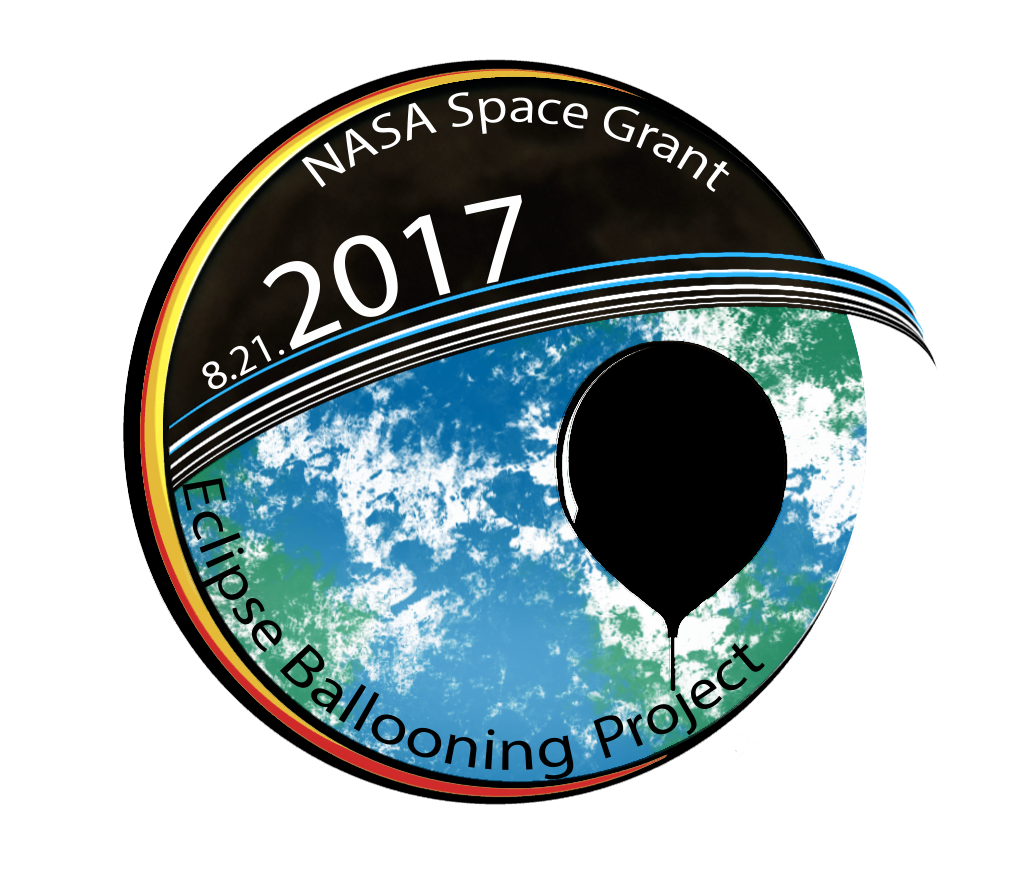Modified Ground Station Software
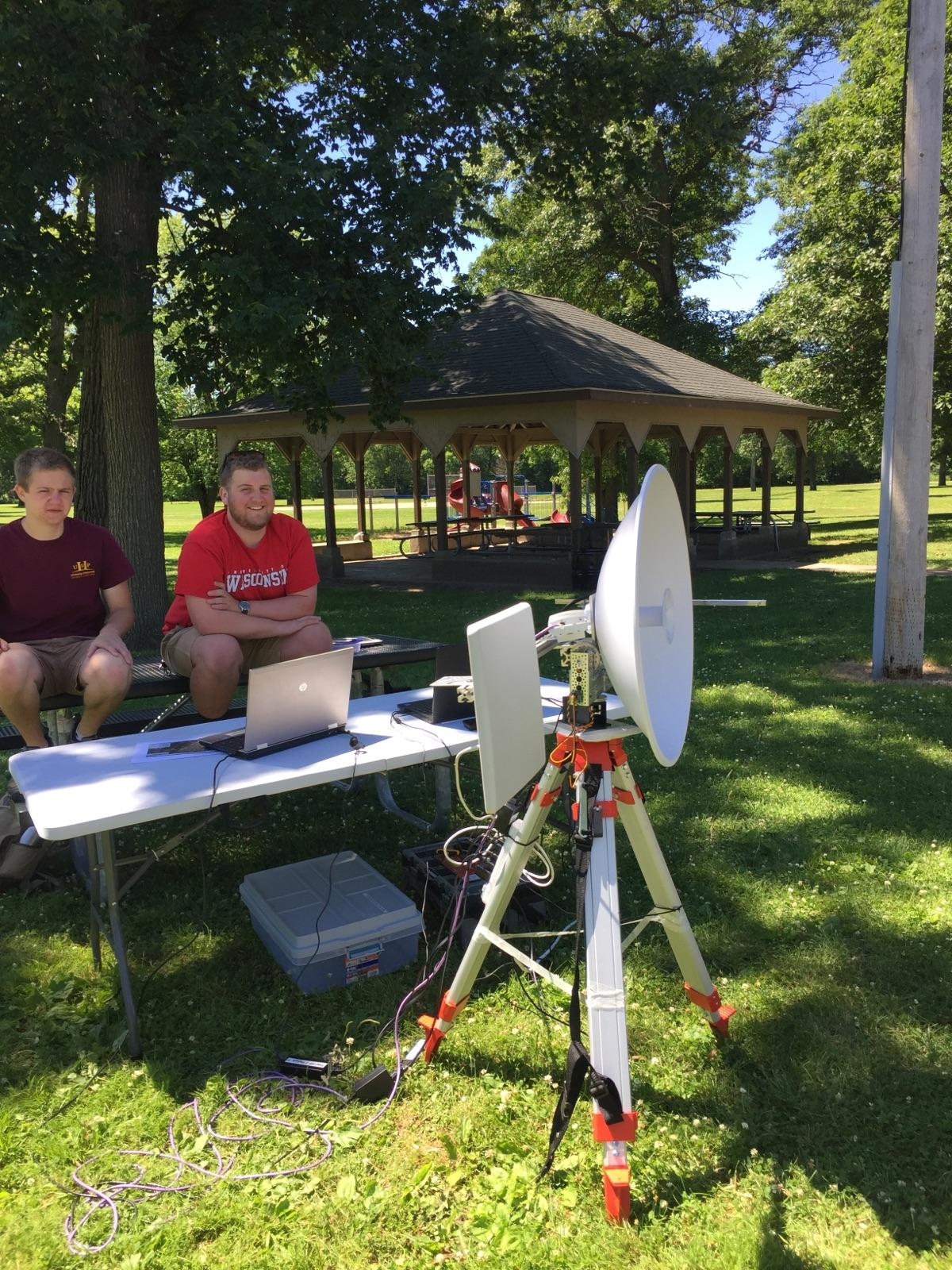
The modified ground station, operated by team members Josh Nelson and Sawyer Mitchell.
Starting in the summer of 2016, the University of Minnesota ballooning team began modifying the Montana State ballooning teamís ground station servo controller tracking software. The software as provided by Montana State incorporated database retrieval of GPS information acquired and uploaded by an Iridium satellite modem, as well as the servo controller interface to automatically aim a set of antennas at those coordinates. It also had methods to determine the location and facing direction of the antenna set with an Arduino using GPS and a magnetometer. Additionally, Montana had created a program to communicate with a payload via a RFD 900+ radio to transmit still images.
We decided to modify these programs to better fit the goals and needs of our team. We decided to combine the pieces of software, so that information received via the RFD 900+ could be used directly by the tracking system, allowing for direct tracking from balloon transmitted coordinates. The led to the creation of the RFD controls interface to parallel the development of the communications relay payload, modified from the still image transmission payload.
Through the course of the summer and subsequent year, many additional features were added to the software to improve functionality and overall usability.
New features:
- Manual Pointing (Coordinate, Angle, Sliders)
- Trim/Offset
- APRS Tracking
- RFD 900 Tracking
- Interactive google maps interface
- Multiple Iridium Modem Support
- Automatic COM Port Detection
- Inflight Tracking Method Switching
- Data Recording
- RFD Based Command/Data Uplink and Downlink
- Integration of Still Image System
- Resizable GUI
- Payload Tracking and Updates

The modified settings tab allows for COM device detection, multiple simultaneous tracking methods, direct recalibration of the center bearing, the option to aim at the most recent balloon position, and selections for graphing, logging, and internet access.
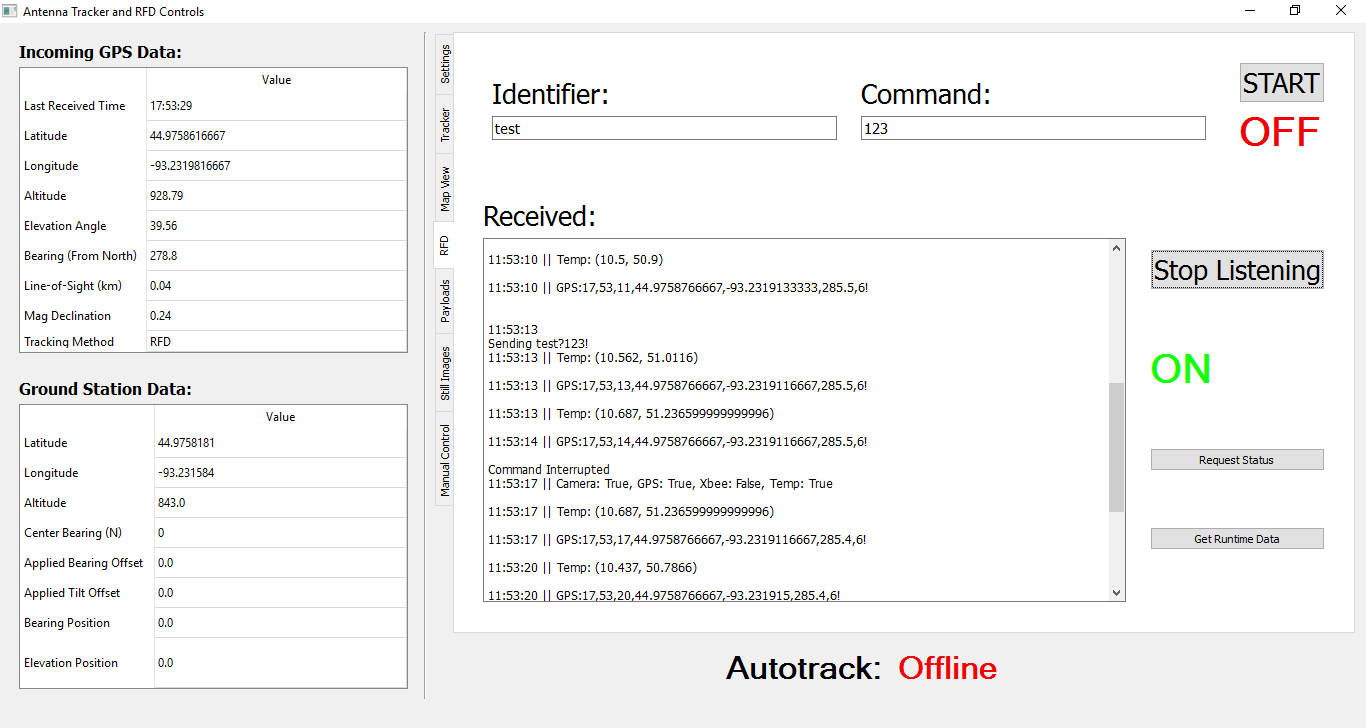
The new RFD tab has inputs for identifier and command. When the Start buttion is pressed, the identifier and command with be put into the proper format and transmitted repeatedly until an acknowledge is received from the payload the message is intended for. All received transmissions are shown in the received browser. A status request will return which devices are connected to the relay payload, and the runtime data button will retrieve the onboard logfile of the relay payload.
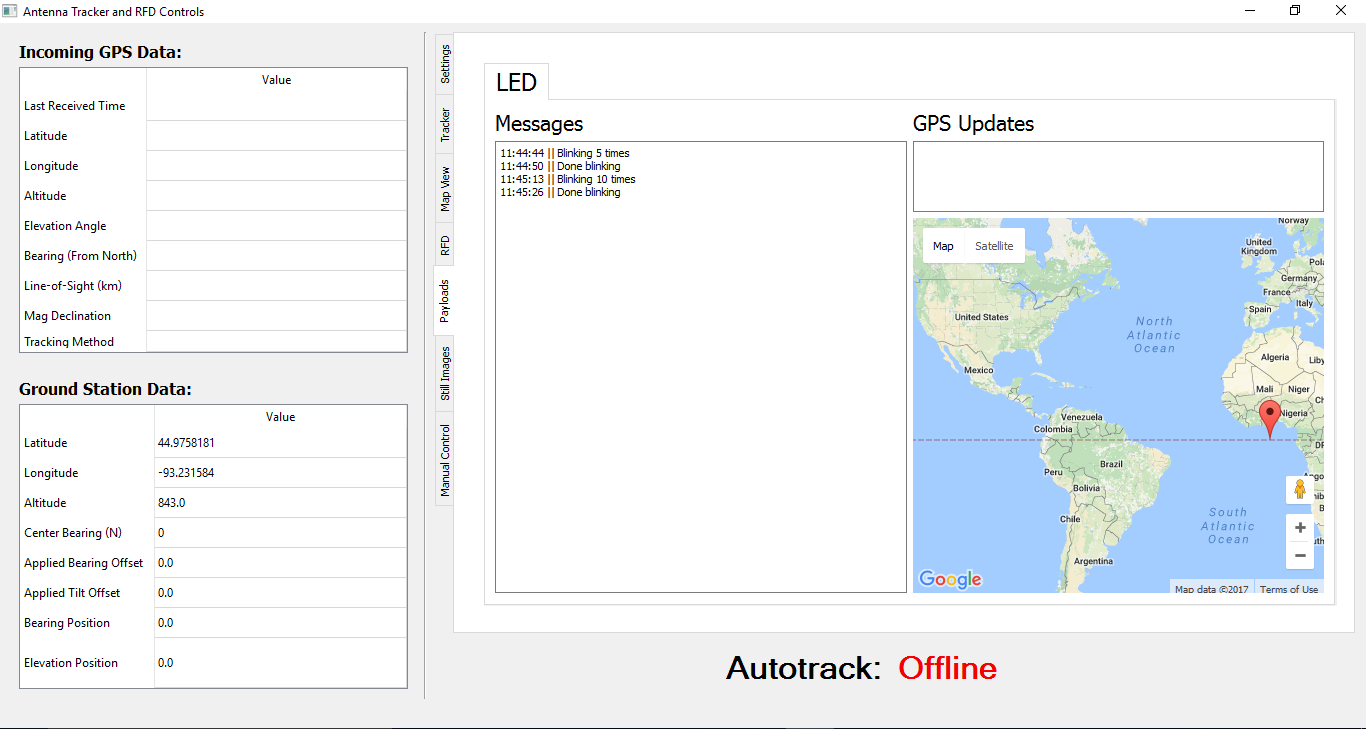
The payloads tab organizes messages received by payloads, and separates their GPS updates. These GPS updates can be used as another method of autotracking.
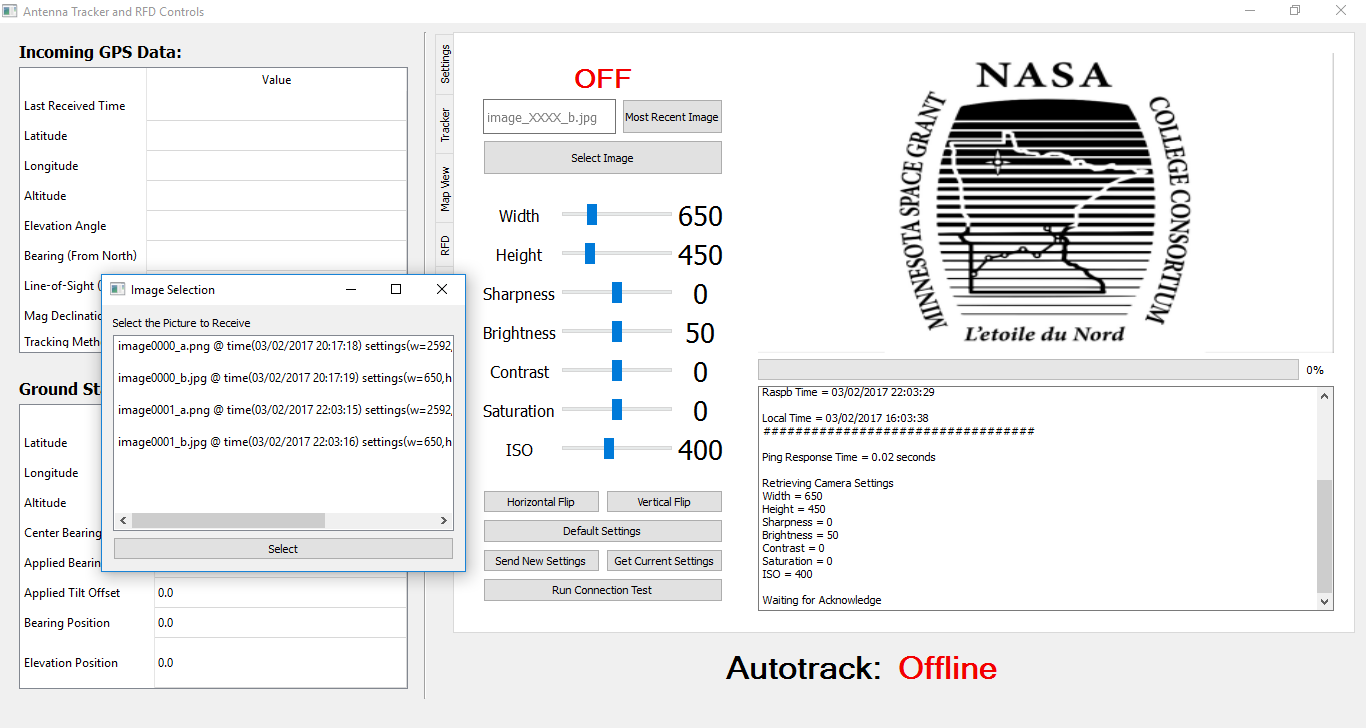
The still image tab is very similar to the still image program created by Montana State. It has options to alter and update the camera settings. It can receive the most receive image, allow the user to select an onboard image, request the current camera settings, or run a connect strength test. The image displayed can be flipped horizontally or vertically. The image selection window appears when the list of images are returned from the payload.
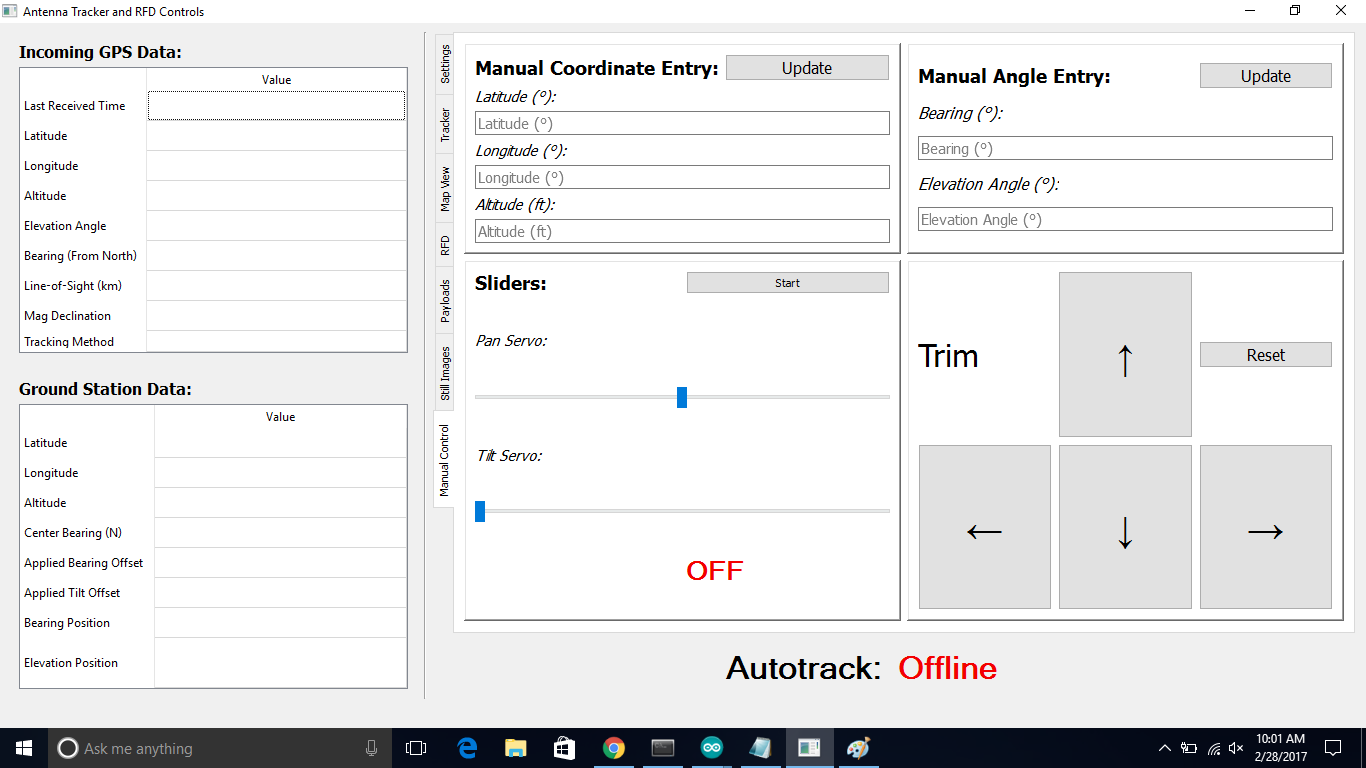
The manual controls tab offers 3 methods of manual control. Coordinate entry allows the user to manual input coordinates to aim at. Bearing and Elevation Angle entry allows the user to enter directions to point in. The sliders are scaled to the max rotation of the servos in the system. The trim controls add an offset to all other methods of aiming.
